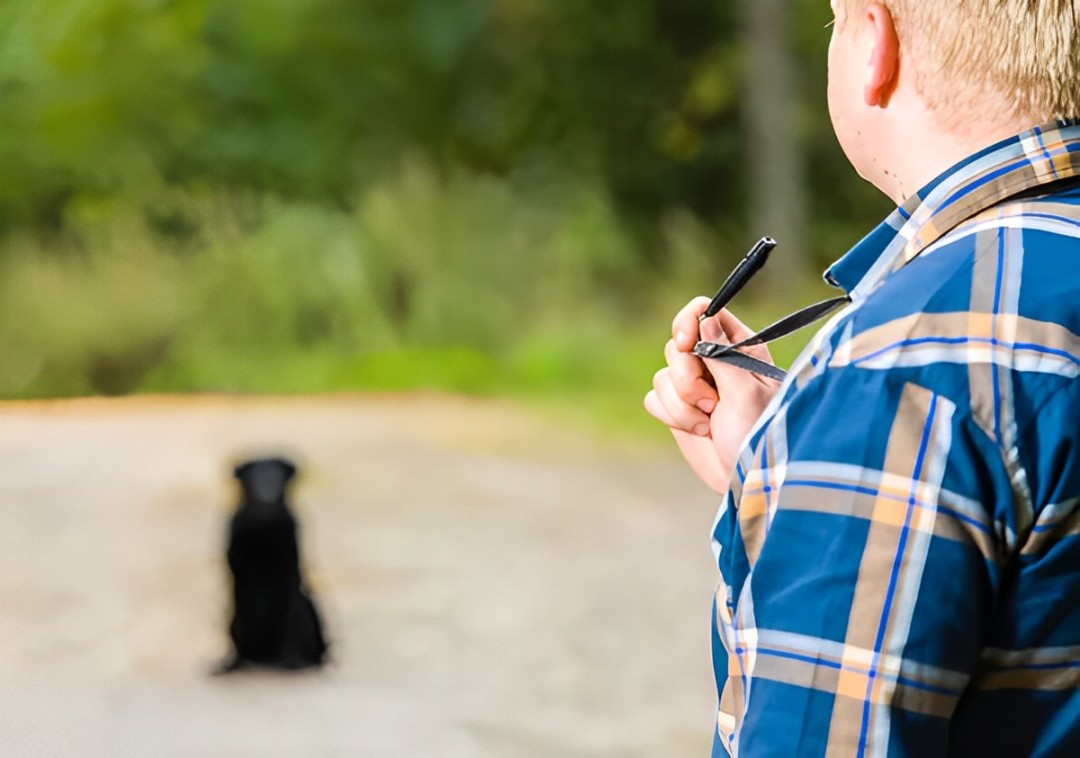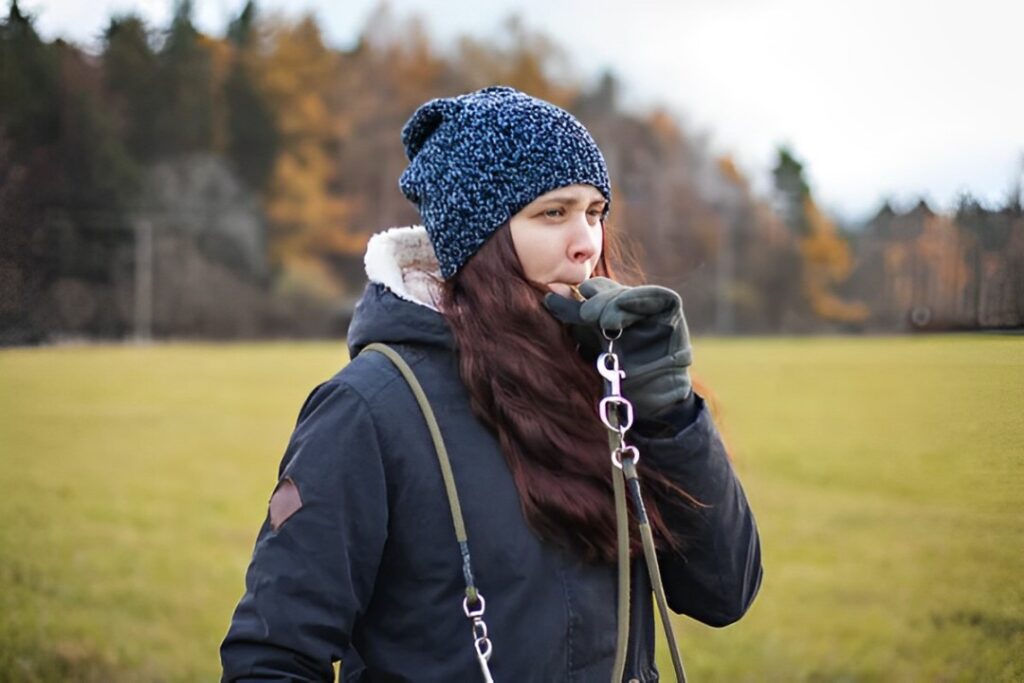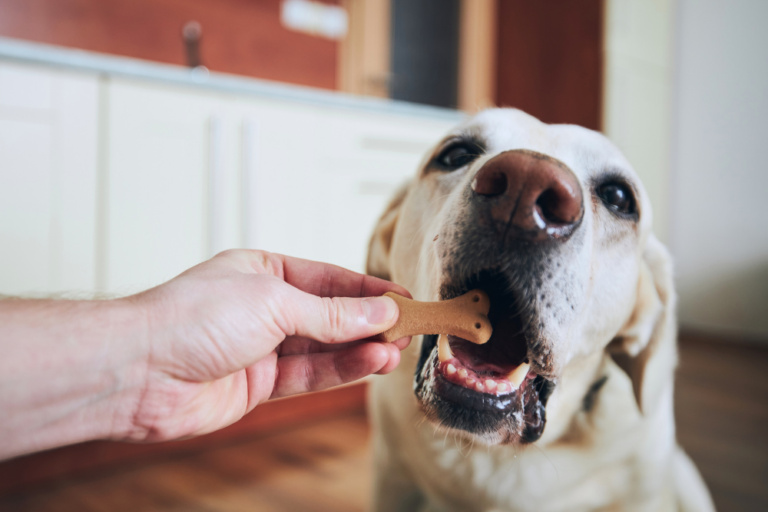Best Tips for Dog Training with a Whistle

Can You Get Your Pup’s Attention? Try This!
Has your dog ever ignored you and it was hard for you to get his attention? Imagine this: It is a sunny day and for the first time in quite some time, both you and your dog are at the park with him off his leash when he sees a squirrel. You shout a name, they are already following you, and do not even turn around at the sound of your voice.
Can you identify with this? It has become a familiar situation for most dog owners to realize their pet will not pay attention to them when there are other things, people, or animals around that are more interesting. Introducing arguably one of the most important inventions in the dog training process – the whistle.
The Science Behind Dog Whistles

Dog whistles are sounds or signals in a frequency that only dogs can pick and it’s therefore hard to teach humans.
Unlike your voice this sound pierces through any other sounds or noises that may be going on and commands the focus of the dog. The practical use of whistles for dogs lie in their ability to hear very well and the distinguish between the tone of the whistle among many other sounds.
Tip: Ensure that the intervals for snacks in training sessions are motivational, make sure to also look for other positive reinforcements like praises. This will assist you in building a good association between training and its results or rewards.
How to Pick the Perfect Whistle
Choosing the right whistle is one of the most important aspects of whistle training. Here are some key points to consider:
- Sound Quality: Select a whistle that will give out a clear and a standard pitch blast. This ensures that your dog can conveniently respond to it especially when or if it was trained with the sound.
- Adjustable Pitch: Some whistles are made and designed to be changed in terms of pitch. This feature is useful if you want to discover the tone that can grab your dog’s attention.
- Durability: When choosing a whistle look for one that is made out of hard wearing materials as it will be in and out of your pocket during the day and may get dropped.
- Comfort: To be specific, a whistle that is easy to blow and one, which you can comfortably hold will help you enjoy your training moment.
Just picture how your pet dog’s ears would switch when the whistle of your choice plays, making him/her more than willing to obey commands.
Wondering How to Start? Whistle While You Train Tips
Whistling for dog training is a very good thing to do because it brings into full use consistency and clarity power.
- Pick the Perfect Whistle: Choose a dog training whistle that you can easily distinguish the sound it makes and it would be constant. Some whistles come with adjustable pitch that will enable you to discover the right pitch that will make your dog respond. One example of an appropriate beginner’s item is a silent dog whistle, which cannot be heard by humans while puzzling dogs.
- Introduce the Whistle: It is best to start in a room that is quiet, with no loud music or people talking loud or moving around a lot. Sound the whistle and follow up with a treat soon after; this helps teach your dog the right signal to blow the whistle. It is advised to do this severally until the pet links the whistle to something positive, such as treats. For example, blow the whistle softly, then reward your dog going for a treat if he is going to look at you.
- Practice Basic Commands: Start with whistle and basic phrases such as ‘come’ or ‘sit.’ Blow the whistle and in conjunction with it give the command then reward your pet. Consistency is key. For example whistle – a single blast and when your dog comes over, feed her. In time, your dog should associate the whistle to a call for it to come to you when it is blown.
- Gradual Exposure: If indoors your dog has a nice response to the training, then transfer the training to outside environments. If your dog fails, try starting in a low-distraught environment and gradually moving up the distraction scale as your dog begins to get better. Start with a backyard, then a solitary park, and then work your way up to noisy parks.
- Stay Patient and Positive: It requires time in modifying the behavior of a dog and each dog requires a certain amount of time in order for him or her to learn. It is good to always look at the small accomplishments and one should be very patient. Just in case your dog fails to react, it is good to remind him gently, and try it again. One must not give up and continue applying pressure and giving rewards and positive encouragement.

>>Top Dog Training Whistles You Need – Click Here <<

Common Mistakes to Avoid: Woofs and Woes
Whistle training has to be done systematically and to the precision. Here are some common mistakes to watch out for:
- Inconsistent Signals: This is because your dog is likely to be overwhelmed by the whistling that is used and he might not know what exact command is being referred to at any given time. When using the commands stick to a single pattern so that they will be easily understood.
- Lack of Reinforcement: If there is no food or toy for your dog to aim at after learning the whistle, then whistling will no longer have a positive effect and can cause them to forget the signal. If they obey the command, always offer them a treat or show some sort of appreciation.
- Too Much, Too Soon: Forcing the dog to respond to a whistle in a high distraction situation while the dog is not yet ready will only create frustration. Progressively raise the level of challenge in order to achieve success in each of them.
Tip: Try and stay as collected and serene as possible. A dog is also capable of identifying the feeling of frustration and stress in their trainer and this already infuses a lot of influence onto how they would likely to act towards their training. Do not scold or become angry with the pet because this demotivates them from the exercises.
Pawsitive Training: You Can Do It!
Starting to train your dog with a whistle can expand the potential ways of training, commanding, and controlling the dog. It will be interesting to note that with this small tool, you can see robust changes to the training sessions. As you have learned, the friends that are going to stick by your side for a long time are patience and consistency.
Hence, go through the process and have fun with the practice and in the long run, you will be rewarded with that which you have practiced. Happy training!






